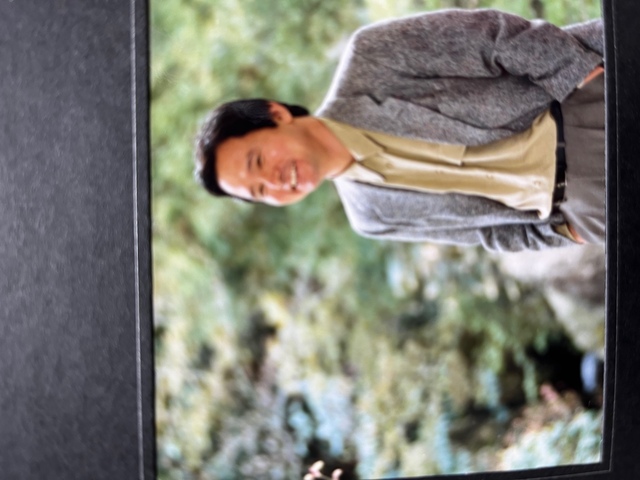G.E. underestimated the situation. Still, Asahi made it seem as if TEPCO's assumptions were inadequate and used them as the basis for the nuclear abolition hoax that followed.
January 18, 2024
This article is from the writings of Masayuki Takayama.
This article also proves that he is the one and only journalist in the postwar world.
The U.S. is the worst offender in the Fukushima nuclear disaster.
Two whole years have passed since 3.11. The Asahi Shimbun carried a surprising article.
It is an interview with the former head of General Electric (G.E.), stationed at TEPCO's Fukushima nuclear power plant.
The reason for the surprise is that Asahi has been blurting out the fact that the reactor that caused the accident was manufactured by G.E. ever since the disaster occurred.
For example, in an article titled "Lax Assumptions" by Keiji Takeuchi, the editorial board member in charge of nuclear power, shortly after the disaster, he wrote: "The containment vessel has no valves.
The containment vessel was not equipped with valves, based on the assumption that a core meltdown would not occur in Japan. The valves, which were introduced in response to overseas developments, have now become a lifeline. It shows how lax the initial assumption of an accident was."
It alone could mean that the reactor was made in Japan and that no gas release valve was installed.
However, G.E. unmistakably made the reactor, and TEPCO voluntarily installed the valves after seeing the Three Mile accident in the U.S.
G.E. "underestimated" the situation, but Asahi made it seem that TEPCO's assumptions were inadequate and used this as the basis for its subsequent false accusations of the abolition of nuclear power plants.
And now they are saying that it was G.E.
The heat must have cooled off by now.
The Asahi may have decided to fix their old lies before noticing them.
The content of the interview is terrible.
The G.E. manager is an Okinawan-born Japanese who spent his youth fighting against the base.
After working as a sailor, G.E. later picked him up and became a boiling water reactor (BWR) expert without knowing about thermal neutrons or criticality.
You might wonder if he's in a good enough position, but he reveals that the Fukushima reactor he was in charge of "experienced several abnormal events, including G.E.'s design flaws."
It is true, stress corrosion cracking was particularly bad.
The high-pressure steam pipes and the shroud encasing the reactor core cracked one after another, causing radiation leaks.
The power turbine was also ruptured, and the fuel rod cladding failed.
In short, it was an utterly defective reactor.
The reactor was rendered inoperable, but G.E. did nothing.
TEPCO, Toshiba, and other Japanese manufacturers worked together to solve the problem.
These are the people that the Asahi Shimbun calls scornful and indiscriminate.
They discovered that stress corrosion was caused by high-carbon stainless steel and the welding process.
The cracking turbine was replaced with a machined one-piece turbine that utilized Japanese technology instead of a cast molding process.
A gas release valve was installed during this improvement, which avoided the worst-case scenario this time.
The G.E. model reactor, made entirely in Japan except for its appearance, had no malfunctions until the tsunami of March 11.
The interview did not touch on this point. Instead, it led the reporter to ask, "Aren't nuclear power plants dangerous?" causing him to speak earnestly about his anguish as a G.E. expatriate about "how unconcerned TEPCO is about safety."
"The BWRs are something you can handle if you're a skilled worker. We had to sharpen our senses, touch the piping, and check for any abnormalities in vibration or temperature."
He does not mention that safe Japanese piping had long since replaced the piping he checked.
It is the kind of talk that American liars have become accustomed to.
Another point he does not mention is why G.E. irresponsibly left defects such as stress corrosion cracking unattended.
Right now, the U.S. side is suing Mitsubishi under the Product Liability Act, claiming that the San Onofre nuclear power plant in the U.S. had to be decommissioned thanks to the failure of a steam generator supplied by Mitsubishi.
It is almost a false accusation, just like Toyota's Lexus lawsuit, but even if Mitsubishi had a defect, it is nothing compared to the severity of G.E.'s defective reactors.
TEPCO did not seek compensation from G.E. because Article 4 of the Nuclear Liability Law prohibits the application of the Product Liability Law, stating that only the operator, such as TEPCO, is liable for compensation.
At that time, the nuclear power business depended on loans from U.S. export banks and G.E.
It is said that this clause was inserted because the U.S. side wanted to avoid thinking about the Product Liability Law even though they were taking care of the nuclear power business.
It may also be why G.E. chose a former sailor to charge of Fukushima.
Thanks to G.E.'s corner-cutting, or rather, because of it, Japan can now build great nuclear power plants. Exports are booming.
The interviewer mentions that more and more Japanese nuclear reactors are being exported, and the Asahi Shimbun makes him say, "Is that OK with you?
There is not a shred of truth in the article.
I want to ask if that's OK with you.
(August 1, 2013 issue)

2024/7/26 in Osaka




























